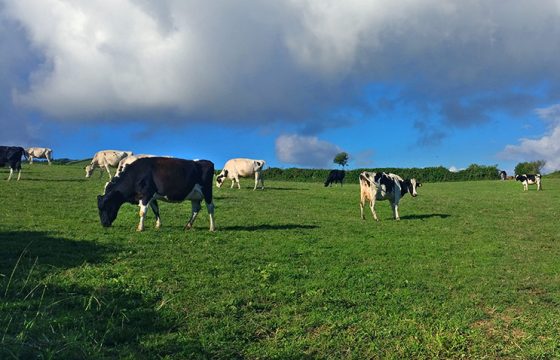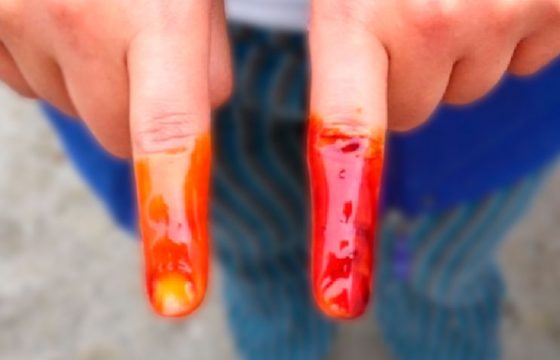What do vets think about Teat dips?
We asked about teat dips to some vets (thanks to all that participate!). They all partook in a short survey consisting of 10 questions on teat dip selection, in connection to selection criteria, general opinion/theory and field experience/observation.

This was done to evaluate how involved vets are in udder health as well as to see if more focus needs to be placed on the management of teat dip selection and evaluation.
Do you agree with them?
Graphs 1 and 2: The results to the 10 questions from the survey and the % breakdown of the answers.
- Resistance to the active was a controversial one, with 68,75% in agreement with the statement “field experience have showed me some resistances to actives”.
This perception of failure is actually more likely due to the degree of focus and the poor application (coverage of the teat or the level of cow cleanliness – degree of contamination of the skin surface of the teat with organic matter inactivating the active) or incorrect formulation of the teat dip (balance between solvents, etc.).
The one point was raised that a farmer could change from dip A to dip B and then back to dip A and the same pattern occurred for each change of teat dip.
It appeared that the dip worked better at the beginning of the change and then the efficacy decreased, and on returning to the original dip the efficacy did the same thing.
This phenomenon is more likely due to the increased awareness and attention that the farmer/milkers is/are putting into their work (application of the teat dip, mixing, etc.).
Graphs 3 and 4: The results to the 10 questions from the survey and the % breakdown of the answers.
- The majority of the participants feel that the choice of a teat dip is “mainly based on the type of active and minimum contact time”.
This was of interest as in contrast to the first point few looked at the concentration, with 56,25% of the participants indicating that this is the responsibility of the manufacturer.
This becomes relevant when people suggest using a different concentration of an active e.g. Iodine did not have better results at higher concentrations. Which could mean expensive actives are not the problem.
I raise this point as the majority of participants were conscious of price, with a 50:50 split between there needing to be a positive return on investment/break even or the concept of no expense spared in the face of a problem.
Mastitis in dairy cows, is an ongoing problem in the dairy sector and will just increase in prevalence as we farm more intensively with a lower profit margin.
This brings up the original point that the correct selection process needs to be the focus and it is a great opportunity for the veterinarian to take control of the prevention plan for the herds that he/she consults at.
Graphs 5 and 6: The results to the 10 questions from the survey and the % breakdown of the answers.
- The majority of participants (68,75%) consider the possibility of interactions occurring between pre and post teat dips, but often the final choice is left to the farmer and sales rep to choose the actives.
It has also been indicated that the deciding factor is the price of the product.A combined 19,40% of participants did not consider the possible interactions and don’t participate in the selection process.

Graphs 7 and 8: The results to the 10 questions from the survey and the % breakdown of the answers.
- The majority of the participants believe that teat dips have a role and specific function in udder health due to knowing that they have limitations as a result of their formulation (residues, barrier/film production, etc.).
This with also have a basic understanding of method of action aid the veterinarian in controlling and advising in the selection of teat dips for the management of mastitis in dairy cows.

Graphs 8 and 9: The results to the 10 questions from the survey and the % breakdown of the answers.
The survey indicates that there is an opportunity to have a stronger involvement of the veterinarian in the management of teat dips, and as the regulations tighten of the intramammary treatments, more emphasis will need to be placed on the use of preventative tools (Teat dips, teat end condition, vaccination, diagnostics, etc.).
It also provides veterinarians a great opportunity to diversify their services to the dairy sector.
Author:






4 Comments
Your conclusion is correct. Knowledge level can be improved considerable. A few of the questions/answered could have been better constructed, but that dies take away from the evidence on the level of knowledge. Dairy farms have some level of assumption that their vet is well trained, but this topic is really outside of the core competence of vets.
Thanks for your comment, more training about this topic is needed, indeed!
Interesting article! How many vets participated and in which country/region was this survey conducted?
Hi,
Thanks for leaving a comment.
The results are from around 80 vets, from South Africa -in this particular case-.
Comments are closed.